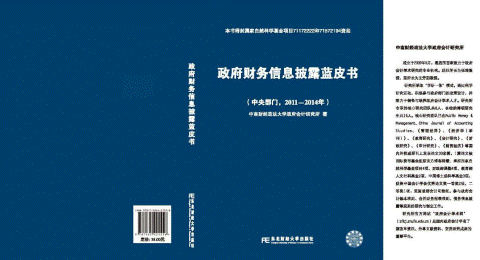News Network (Reporter, Yan Lina) Recently, Government Accounting Institute of ZUEL officially released “Blue Book on Disclosure of Government Financial Information” (2011-2014). The blue book aims to build a database based on the analysis of data on financial information of central government from 2011 to 2014, which exclusively belongs to government accounting (auditing) for common use. The edition of this blue book was finished by professor Zhang Qi and doctor Pan Xiaobo who are experts in Government Accounting Institute on ZUEL.

Transparency of government financial information is not only an important basis to set up “transparent government” and “credible government”, but also a necessary prerequisite to ensure civil rights to stay informed about, oversee and participate in government affairs. In recent 5 years, the reform of the publicity of national government financial information has got initial results. Our national government accounting (auditing) research is transferring to mainstream quantity research which includes large sample empirical study, questionnaire investigation, and experimental research and so on. While in short of data in public research, we have limited use of quantity analysis in government accounting (auditing) research. The blue book written by experts in Government Accounting Research Team of ZUEL builds a database which exclusively belongs to government accounting (auditing). It can provide enough data and enhance the application rate of quantity analysis in government accounting(auditing).
The blue book which includes five parts was published by Dongbei University of Finance and Economics press. First part is “disclosure on quality of financial information” which measures the disclosure on quality of central department financial information and analyzes the changes of disclosure on the quality of annual information. Second part is “administrative operation cost” which analyzes the character of administrative operation cost of central government departments and the influence of auditing on the cost. Third part is “auditing of expenditure execution” which analyzes the annual expenditure execution of central government departments and notifications of readjusted results of other fiscal budgets published by National Audit Office of China. Then it counts and describes relevant data (audit departments, problem amounts) to explore the factors that influence the choice of audit samples. Fourth part is “consensus concentration” which analyzes the media attention of publicity information of central government budgets. Then it counts and describes the amounts, ways, and moods of media attention to briefly analyze annual changes. Fifth part is “media accountability” which counts and describes the relevant data of doubted fiscal and budget information of central government. Then it compares the puzzled information with data from provincial government and local government to analyze the major concerns and government’s response to people’s doubts.
